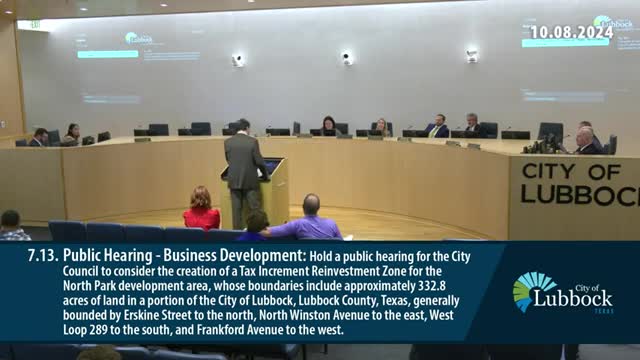Lubbock plans historic statue honoring Comanche leader Quanah Parker
October 08, 2024 | Lubbock, Lubbock County, Texas
This article was created by AI summarizing key points discussed. AI makes mistakes, so for full details and context, please refer to the video of the full meeting. Please report any errors so we can fix them. Report an error »

In a recent city council meeting, historian Ty Kreidler passionately advocated for the establishment of a park dedicated to Quanah Parker, a prominent Comanche leader, as part of a broader initiative to honor Native American history in West Texas. Kreidler, who has spent over 14 years documenting the Comanche and the Quanah Parker Trail, emphasized the significance of a proposed statue depicting Parker on horseback, which would be one of the few such representations in the region.
The project, spearheaded by local attorney Kevin Glasheen and supported by artist Eddie Dixon, aims to create a cultural centerpiece that recognizes Parker's historical impact and connection to Lubbock. Kreidler highlighted Parker's legacy as a warrior and diplomat who navigated the complexities of Native American life during a tumultuous period in U.S. history. He urged the council to support the tax increment reinvestment zone that would facilitate the park's development.
Holly Humphreys, another resident and supporter of the initiative, echoed Kreidler's sentiments, noting the importance of public art in recognizing Native American contributions. She pointed out the scarcity of monuments featuring Native Americans on horseback, making this project particularly significant. Humphreys also referenced her own connection to the Comanche family and the broader cultural heritage of the region, advocating for the park to be named in honor of Quanah Parker.
The discussions reflect a growing recognition of the need to celebrate and preserve the history of Native Americans in Texas, particularly in areas with deep historical ties to figures like Quanah Parker. The proposed park and statue not only aim to honor Parker's legacy but also to enhance Lubbock's cultural landscape and attract tourism, contributing to the local economy. The city council's decision on this initiative could mark a pivotal moment in acknowledging and celebrating the rich history of the Comanche people in West Texas.
The project, spearheaded by local attorney Kevin Glasheen and supported by artist Eddie Dixon, aims to create a cultural centerpiece that recognizes Parker's historical impact and connection to Lubbock. Kreidler highlighted Parker's legacy as a warrior and diplomat who navigated the complexities of Native American life during a tumultuous period in U.S. history. He urged the council to support the tax increment reinvestment zone that would facilitate the park's development.
Holly Humphreys, another resident and supporter of the initiative, echoed Kreidler's sentiments, noting the importance of public art in recognizing Native American contributions. She pointed out the scarcity of monuments featuring Native Americans on horseback, making this project particularly significant. Humphreys also referenced her own connection to the Comanche family and the broader cultural heritage of the region, advocating for the park to be named in honor of Quanah Parker.
The discussions reflect a growing recognition of the need to celebrate and preserve the history of Native Americans in Texas, particularly in areas with deep historical ties to figures like Quanah Parker. The proposed park and statue not only aim to honor Parker's legacy but also to enhance Lubbock's cultural landscape and attract tourism, contributing to the local economy. The city council's decision on this initiative could mark a pivotal moment in acknowledging and celebrating the rich history of the Comanche people in West Texas.
View full meeting
This article is based on a recent meeting—watch the full video and explore the complete transcript for deeper insights into the discussion.
View full meeting
